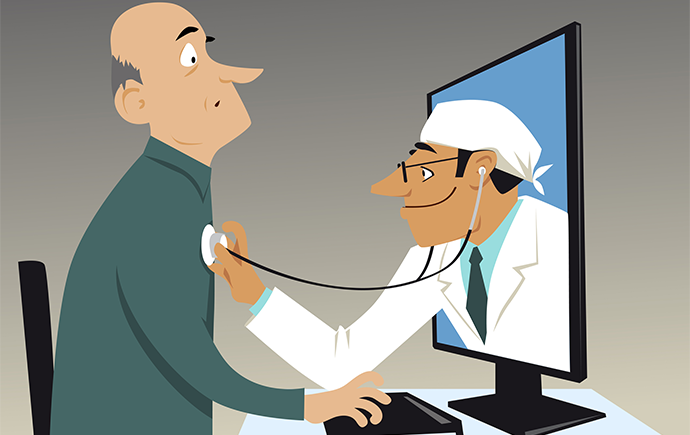A Small Medical Group Uses Telehealth to Redesign Care Management
The Reliance Medical Group has launched a Virtual Office that uses remote patient monitoring to care for patients with chronic conditions. Its creator says the telehealth platform may soon eclipse office-based care.

Source: ThinkStock
- While the COVID-19 emergency is forcing many small practices to rethink care management, one New Jersey medical group has developed a telehealth platform that just may offer a blueprint for sustainable virtual care.
The Reliance Medical Group, with 40 physicians in 23 locations stretched across the southern part of the state, has launched a Virtual Office that operates out of its own command center, with a 14-person staff that does everything from scheduling online appointments to researching the latest news on CPT codes and reimbursement.
For a health network serving some 70,000 people that was losing roughly 60 percent of its revenues during the height of the coronavirus pandemic, the program helped to change how providers sought to deliver care.
“COVID-19 forced a lot of doctors to look at other ways to generate revenues for survival and to keep patients engaged,” says Dr. Jon Regis, Reliance’s CEO and president. “We had to figure out a new way to take care of patients.”
Now, he says, “you can see revenues growing exponentially while we’re taking better care of our patients.”
READ MORE: How One Dermatologist Learned to Launch - and Like - Telehealth
Following a plan laid out prior to the coronavirus pandemic, Reliance shifted its thinking from episodic care to care management, starting with the annual wellness visit. Noting how many of its patients were on Medicare, and how many of those patients were dealing with chronic health concerns, the medical group developed a remote patient monitoring platform, using CAREMINDr's telemedicine technology, that's aimed at connecting with patients in between the visits to the doctor’s office.
Staff in the Virtual Office handled all the details, signing patients up for the program, connecting with them through an mHealth app and checking in with them every now and then. On the back end, the office billed for the connections through the Centers for Medicare and Medicaid Services’ Chronic Care Management (CCM) codes.
“If you plan this right, there’s plenty there to build upon,” Regis says of the bundled payment programs and CPT codes. “I figured we should start by mining the gold that’s already in the hill.”
More importantly, he says, Reliance created a relationship with its patients that focused on health and wellness, particularly for those dealing with health issues every day. Patients were encouraged to connect with their care providers for guidance through the app, and were referred to a doctor for a telehealth visit if the need arose.
“You’re creating a journey of care,” says Regis, who’s on his own journey for high blood pressure. “And they’ll push the hell out of you.”
READ MORE: A NYC Telemental Health Clinic Uses mHealth to Gain New Insights Into Care
And every journey includes a bag.
In this case, it’s “The Red Bag,” a bag – obviously red – that’s sent home with patients and is filled with information on care management and mHealth devices (The program was initially launched to care for people living with diabetes and high blood pressure, has been expanded to include those dealing with COVID-19, and will be expanded further.)
“We got a red cloth shopping bag, put our logo all over it, and we gave them the devices at no charge for home monitoring,” says Regis. “That red bag quickly became famous in the community. We were seeing it everywhere. People were walking around with it, going shopping with it.”
As the number of patients in the RPM program grew, Reliance added more staff to its Virtual Office. Regis says his physicians are referring patients to the program, and Virtual Office staff are identifying more through their work with payers.
He’s also had requests from other small practices to join the program, and is looking to build Reliance up to 30 practices in a year.
“We’re going to scale this bad boy up,” he says enthusiastically. “It’s going to change the game, because the game needs to change. And we’re finding the perfect interface between the practice, the patients and the back office.”
To handle that extra business, Reliance is building a studio for its Virtual Office, and designating staff to help train providers on telehealth visits. Regis wants to expand the RPM platform with new technology, such as the home monitoring kit developed by Tyto Care. And he’s thinking of new journeys, such as a program for maternal (especially premature labor) and pediatric care.
“I really believe that the Virtual Office will generate more revenue than our actual offices,” he says. “We’re picking people up and helping them along. We’re actually picking up problems before the patient goes to the emergency room.”
